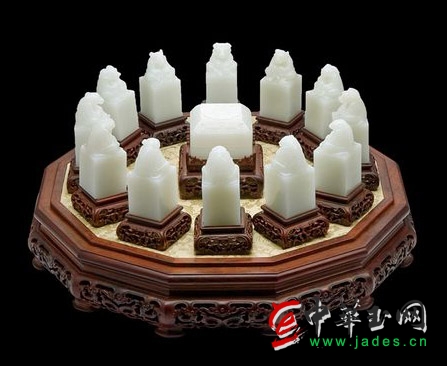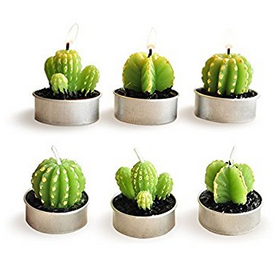 Jade carving is one of the oldest carvings in China.
Jade carving is one of the oldest carvings in China. Jade carving - Introduction Jade carving is one of the oldest carvings in China. During Shang and Zhou dynasty, jade was a specialty, and jade was used as a ceremonial apparatus and decoration. Jade has always been regarded as a treasure. In ancient China, jade was used as a symbol of a beautiful product and a symbol of a gentleman. There are many types of jade carvings, including large works such as figures, utensils, birds and animals, and flowers, as well as small pieces such as pins, rings, seals, and accessories. Chinese jade carving works enjoy a high reputation in the world.
Jade Carving - Overview Jade Carving is one of the oldest carvings in China. As early as the late Neolithic era, the Chinese nation had a jade tool. During Shang and Zhou dynasty, jade was a specialty, and jade was used as a ceremonial apparatus and decoration. Jade has always been regarded as a treasure. In ancient China, jade was used as a symbol of a beautiful product and a symbol of a gentleman's style.
Jade is actually a quality stone. There are many types of jade, including white jade, topaz, jasper, jade and agate, turquoise, and Hibiscus. Jade processed and carved into a beautiful handicraft, known as jade carving. Craftsmen in the production process, according to the natural color and natural shape of different jade materials, after careful design, repeated pondering, in order to make jade carvings into exquisite handicrafts.
There are many types of jade carvings, including large works such as figures, utensils, birds and animals, and flowers, as well as small pieces such as pins, rings, seals, and accessories. The large-scale jade sculpture “Dazhao Zhishui†collected in the Palace Museum of Beijing shows the superb skills of Chinese jade carving.
The main origins of Chinese jade articles include Beijing, Shanghai, Guangzhou, Liaoning, Jiangsu, Xinjiang, and Qinghai, which appeared in modern times. Chinese jade carving works enjoy a high reputation in the world.
Widely respected and cherished by Chinese people. Since the beginning of civilization, to date, no matter how great the Chinese culture has experienced, the national sentiments of Chongyu and Aiyu are still deeply ingrained, and the art of jade carving has also continued unabated. The wisdom of the Eastern civilization shines on the jade. It is the most attractive of the traditional Chinese crafts and deserves our cherish. "The beauty of jade" promotes jade culture in China!
Jade carving - the old saying in the culture says "Jade is not a good thing". Any piece of jade, after artificial carving, gives it new value and charm. China's jade carving process has a long history and is recognized by the world. As early as the primitive society stage, our ancestors used jade to produce a variety of production tools such as imaging gongs, spears, knives, axes, shovels and a variety of jade carving accessories, such as the Neolithic site of Hemudu in Yuyao, Zhejiang Province, discovered in 1973. Among them, 28 pieces made of jade, pipe, and beads are made of jade materials and fluorite, which has a history of more than 7,000 years. In the slave society, that is, the Shang and Zhou dynasties, the jade carving craftsmanship has made new progresses, refined and elaborately decorated, and new jade sculptures featuring fish, turtles, birds, animal faces, rabbits, and silkworms have emerged. The common patterns include dragon patterns, dragonfly patterns, cloud-ray patterns, plagiarism patterns, square patterns, etc. Especially when the appearance of jade carving Yangwen lines was a big leap in technique processing.
Jade - types According to the current theory of geology, jade is divided into nephrite jadeite and jadeite jade. Most jades in daily life refer to nephrite jade. There are many types of nephrite jade, generally referring to those produced in Xinjiang. Sheep fat white jade, white jade, topaz, purple jade, ink jade, jasper, green jade, red jade and northeastern jade and so on. The white jade texture is exquisite, the luster is strong, and the white is like suet, which can be called the "king of nephrite" and "the crown of white jade". The other Nanyang jade, Lantian jade, Hetian jade, agate, crystal, coral, turquoise, lapis, etc., belong to the soft jade category. Later, due to the opening of the Silk Road, the jade produced in the Hetian area of ​​Xinjiang was uniformly recognized and gradually became the protagonist in the processing of palaces, official and folk jade articles. Nephrite gradually evolved into a synonym for Hetian jade [1].
Nephrite, also known as amphibole, is an aqueous calcium magnesium silicate with a hardness of 6.5, excellent toughness, translucent to opaque, fibrous crystal aggregates. Nephrite jade color is similar to the fat of the oil, the pure color white, delicate and moist. Secondly, nephrite contains a small amount of oxidized metal ions and shows green, green, yellow and other colors.
Jadeite jadeite is a type of jade with very high hardness. It is a kind of pyroxene. It has a bright and shiny name - jadeite, which is the sodium aluminosilicate in the pyroxene family. Therefore, it is also called pyroxene and jadeite. It is mainly produced in Burma, but it is also produced in Yunnan, China. It has white, purple, red, yellow, blue, green and other colors. White is also known as ice ground. Green is also known as Qingdier, which is the best among generations. of. The general red is called the cricket, the green is called the emerald, and the emerald is called. The tricolor jadeite is also known as "Tao Yuan Jie Yi" or "Fu Lu Shou."
Jadeite, hard texture, high density, sodium aluminosilicate, hardness 6.5-7, specific gravity 3.2--3.3. Translucent to opaque (but some good quality is also close to the transparent body). Granular to fibrous aggregate, dense blocky, with glass sheen. The genre of this paragraph is divided into Chinese contemporary jade carving craft. From the big schools, it can be divided into two schools: North and South. The North School is represented by Beijing, covering Liaoning, Tianjin, Hebei, some Henan, Xinjiang and other northern provinces and cities. It includes the coastal areas of the Yangtze River and the area south of the Yangtze River and is divided into several branches, including “Shanghai Workers†represented by Shanghai Mu Yujing, “Suzhou Workers†represented by Suzhou, and “Yangzhou Workers†represented by Yangzhou. There are also "Guangdong workers" and "Fujian workers." Shanghai jade carvings are mainly white jade, and there are also a small number of jade carvings.
The Decorative Tealight Candles are in a unique design, we can shape it to a plan, animal, snow and so on, but all of it with aluminum base.
Standard tealight size, each candle size: 1.57" Dia x 1.57" H ,3 different styles, 6 pcs cactus candles included
Paraffin material, eco-friendly and safe for use , green wax featured
Create some lovely, peaceful ambiance with these adorable tea lights, Cactus Style Thanks Card ,write your wishes on the back cactus card
Perfect for bedrooms, dining rooms, living rooms, and anywhere that needs a refreshing accent,also a great gift idea for your friends

Decorative Tealight Candles
Decorative Tealight Candles,Party Decorative Tealight Candles,Home Decoration Tealight Candles,Valentine'S Day Tealight LED Candles
Shijiazhuang Huaming Laye Limited Company , https://www.huamingcandle.com